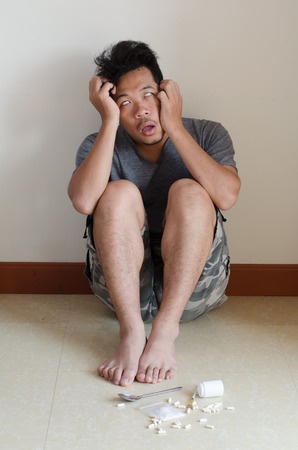
In the summer of 2015 when flakka was at its zenith in Broward County Florida, police needed four or five officers to subdue one agitated person high on flakka. In The Washington Post, Todd Frankel said people high on flakka were everywhere. “Running into traffic. Zoned-out on curbs. Sometimes naked. Sometimes in the grips of a drug-fueled psychosis.” Emergency departments were overwhelmed. A drug treatment counselor in Florida said: “At the height of the flakka craze, you were almost praying for crack cocaine to come back.”
In the summer of 2015, 12 new cases of flakka-related delirium were admitted daily to South Florida hospitals. Flakka users are resistant to pain and sometimes have superman strength. Tasers were sometimes ineffective. Deputies sometimes had to wrestle users to the ground and punch them to gain control. Talking didn’t work. Reporting for The Fix, Valerie Tejeda said CNN reported there were 63 deaths attributed to using flakka in South Florida between September 2014 and December 2015. Also for The Fix, McCarton Ackerman said some Florida EMS departments were training to use ketamine to sedate flakka users who showed signs of aggression.
Then almost as quickly as flakka came onto the scene, it went away. Returning with Todd Frankel to a gas station that had been a local gathering place to buy and sell flakka, a police lieutenant in Pompano Beach Florida couldn’t find even one person. In a short period of time flakka has disappeared from South Florida. “Experts say drug epidemics almost never burn out like this.”
In March of 2015, the United Way of Broward County organized the Flakka Action Team. The task force consisted of substance abuse counselors, local police officers and others. They developed a plan “to educate the community, to teach the police how to respond and figure out how to stop flakka production.” Anti-flakka posters were put up around the county. Community forums were held. Education presentations were done at schools, jails and homeless shelters.
Traditional drug treatment didn’t work with flakka users. One of the post acute withdrawal effects with chronic users was concentration. “Even filling out paperwork was a challenge.” Some people were light sensitive, so sessions occurred in darkened rooms. Some others struggled with paranoia and insomnia.
Jim Hall, an epidemiologist at Nova Southeastern University in Fort Lauderdale, publicized the Chinese connection with flakka. You could place an online order for flakka from a Chinese manufacturer and have it delivered to your door. A kilo of flakka cost $1,500 and had a street value of $50,000. In mid–October of 2015, the U.S. Treasury imposed sanctions on one alleged synthetic drug producer in China. In November, Florida law enforcement officials and local DEA agents went to China to plead their case directly with the Chinese government.
Afterwards, China announced they had banned 116 different synthetic drugs, including flakka and fentanyl. Confusingly, the announcement said this action had been taken on October 1st. Reported hospital cases of flakka in Broward County went from 306 in October of 2015 to 54 in December. There have been no reported deaths from flakka in 2016 as of the beginning of April 2016. There were only six flakka users admitted to Florida treatment centers in January. In February the Flakka Action Team dropped “flakka” from its name.
Michael Bauman of the National Institute on Drug Abuse (NIDA) said: “History has shown that one of the unintended consequences to banning certain drugs is that it typically leads to an explosion of new replacement drugs.” Whether or not that will occur in response to the 116-drug ban remains to be seen. But there is a next step to be taken, if the recommendations of a Broward County grand jury are activated. They recommended that entire classes of drugs, such as synthetic cathinones or bath salts, which includes flakka, should be banned.
Florida Attorney General Pamela Bondi has proposed the “2016 Florida Designer Drugs Enforcement Act.” The legislation would ban synthetic cathinones, synthetic opioids and synthetic cannabinoids. It could potentially outlaw as many as 1,000 different chemical compounds, according to Jim Hall.
But what’s next? The next “designer-drug battlefield” would seem to be variations of the synthetic opioid fentanyl. Craig Mallak, the Chief Medical examiner for Broward County said: “Flakka is gone … fentanyl is the next big thing.” His office is in the process of developing a database to track the trend of fatalities with fentanyl.
For more information on flakka, read “Flack from Flakka,” “High on Flakka” and “Emerging Public Health Threat.”





